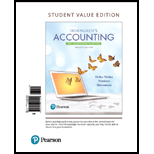
Introduction:
Income Statement: The income statement also called a
Statement of Owner’s Equity: The statement of owner’s equity is that statement which shows the increase or decrease in equity shareholders fund within an accounting period. This is increased by profits/ gains to shareholders during the year and the amount distributed to shareholders are shown as a deduction.
Balance Sheet: The balance sheet is the position of assets and liabilities of the company at the end of the financial year. It includes all the assets, owner’s share named as equity shareholder and all debts named as liabilities of the company. Its equation is “Assets = Liabilities + Equity Shareholders”.
Cash Flow Statement: Cash flow statement is that statement which shows the inflow and outflow of cash within a sepcific period of time. It is shown in three different categories which are cash flow from operating activities, cash flow from investing activities and cash flow from financing activities.
To calculate: The income statement, statement of owner’s equity, balance sheet, and statement of cash flows for the company.
Want to see the full answer?
Check out a sample textbook solution
Chapter 1 Solutions
Horngren's Accounting: The Managerial Chapters, Student Value Edition (12th Edition)
- Better Value Hardware began 2010 with a credit balance of $37,500 in the allowance for sales returns account. Sales and cash collections from customers during the year were $1,025,000 and $675,000, respectively. Better Value estimates that 8% of all sales will be returned. During 2010, customers returned merchandise for a credit of $31,000 to their accounts. Better Value's 2010 income statement would report net sales of _? I want answerarrow_forwardI need help solving this General accounting question with the proper methodology.arrow_forwardA company has a net income of $645,000 and 43,000 outstanding shares. What is the earnings per share?Solve thisarrow_forward

 AccountingAccountingISBN:9781337272094Author:WARREN, Carl S., Reeve, James M., Duchac, Jonathan E.Publisher:Cengage Learning,
AccountingAccountingISBN:9781337272094Author:WARREN, Carl S., Reeve, James M., Duchac, Jonathan E.Publisher:Cengage Learning, Accounting Information SystemsAccountingISBN:9781337619202Author:Hall, James A.Publisher:Cengage Learning,
Accounting Information SystemsAccountingISBN:9781337619202Author:Hall, James A.Publisher:Cengage Learning, Horngren's Cost Accounting: A Managerial Emphasis...AccountingISBN:9780134475585Author:Srikant M. Datar, Madhav V. RajanPublisher:PEARSON
Horngren's Cost Accounting: A Managerial Emphasis...AccountingISBN:9780134475585Author:Srikant M. Datar, Madhav V. RajanPublisher:PEARSON Intermediate AccountingAccountingISBN:9781259722660Author:J. David Spiceland, Mark W. Nelson, Wayne M ThomasPublisher:McGraw-Hill Education
Intermediate AccountingAccountingISBN:9781259722660Author:J. David Spiceland, Mark W. Nelson, Wayne M ThomasPublisher:McGraw-Hill Education Financial and Managerial AccountingAccountingISBN:9781259726705Author:John J Wild, Ken W. Shaw, Barbara Chiappetta Fundamental Accounting PrinciplesPublisher:McGraw-Hill Education
Financial and Managerial AccountingAccountingISBN:9781259726705Author:John J Wild, Ken W. Shaw, Barbara Chiappetta Fundamental Accounting PrinciplesPublisher:McGraw-Hill Education





